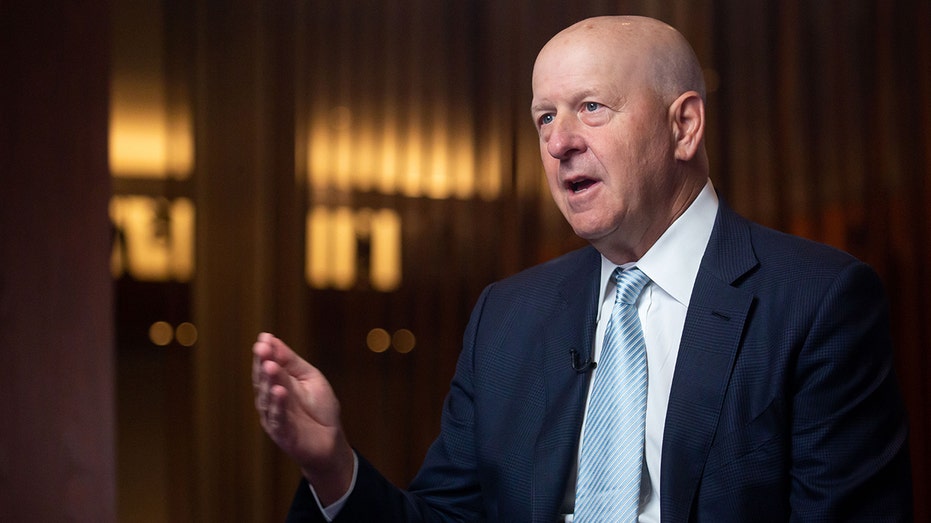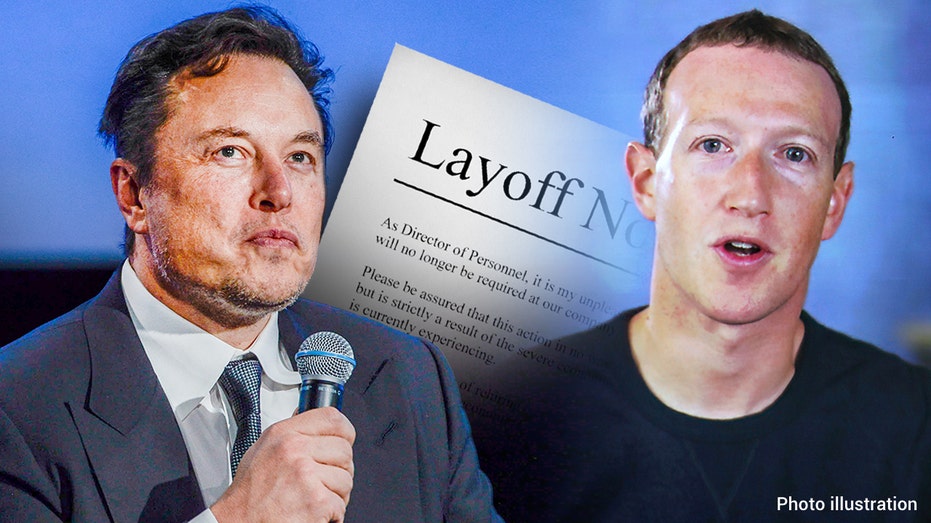The debate swirling inside HR departments: how to lay off workers
When exactly to fire employees, whether to cut once or multiple times and how much severance to offer can vex executives; the Zoom question
Layoffs are a great excuse to fire poor performers: Tom Gimbel
LaSalle Network founder and CEO Tom Gimbel analyzes the health of the jobs market after layoffs on Wall Street and in the tech sector on 'Cavuto: Coast to Coast.'
Executives considering downsizing are currently grappling with the same problem: finding the most effective way to let employees go.
Is it better to get layoffs over with all at once even at the risk of cutting too deep? Is firing over Zoom more humane than making an employee come into the office to lose their job? How much severance pay is fair?
As well-known employers including Amazon.com Inc., Salesforce.com Inc., Goldman Sachs Group Inc. and others lay off workers, executives elsewhere say they are closely monitoring different approaches to the process.

David Solomon, chief executive officer of Goldman Sachs Group Inc., during a Bloomberg Television at the Goldman Sachs Financial Services Conference in New York, US, on Tuesday, Dec. 6, 2022. Solomon sees "bumpy times ahead" for the global economy, m (Photographer: Michael Nagle/Bloomberg via Getty Images / Getty Images)
Some human-resources teams are building spreadsheets to track how many positions peers cut and what they say to employees during the reductions. Laid-off workers, meanwhile, are comparing severance agreements and pushing back if they feel terms fall short, which has sometimes led to tense all-hands sessions.
STITCH FIX TO CUT 20% OF SALARIED JOBS, CEO STEPPING DOWN
| Ticker | Security | Last | Change | Change % |
|---|---|---|---|---|
| AMZN | AMAZON.COM INC. | 231.00 | -8.12 | -3.40% |
| CRM | SALESFORCE INC. | 220.07 | -7.04 | -3.10% |
| GS | THE GOLDMAN SACHS GROUP INC. | 943.37 | -18.63 | -1.94% |
"I’m not sure there’s one recipe" for a layoff, said Katy George, a senior partner and chief people officer at McKinsey & Co.
The stakes for companies are high. Though the job market is cooling, the unemployment rate stood at a historically low 3.5% in December and many employers say they still face challenges filling some positions.
This is also among the first job downturns in the era of increasingly empowered and vocal employees who are adept at using Slack and other tools to amplify their criticisms. Companies say it is important to handle layoffs carefully to protect employers’ reputations and help maintain morale among those who remain.

Employees have become increasingly vocal and organized, often use modern technology like slack to gains support. Angelika Maldonado, right, Amazon Labor Union (ALU) chairwoman of workers committee at Staten Island Amazon warehouse, Brett Daniels, cen ( (AP Photo/Bebeto Matthews) / AP Newsroom)
Some companies telegraph weeks in advance that layoffs should be expected, a tactic that can give employees warning while also raising uncertainty over whose roles will be eliminated, human-resources advisers say.
MCDONALD'S MULLING CORPORATE JOB CUTS
When Salesforce Co-Chief Executive Marc Benioff announced Wednesday that the cloud-software giant planned to eliminate roughly 10% of its staff, he told employees to check their email within the hour to see if their roles had been affected. Other corporate leaders, such as video-technology company Vimeo Inc., which said this week that it would cut about 140 people, have sent companywide notes after individual employees had been contacted.
| Ticker | Security | Last | Change | Change % |
|---|---|---|---|---|
| VMEO | NO DATA AVAILABLE | - | - | - |
Many companies struggle over whether to make one sweeping layoff, or to do a series of smaller cuts over a period of time while assessing a company’s financial situation, advisers and executives say. Both carry risks. If a layoff is too large, a company can inadvertently cut key units or people, executives say. Yet multiple layoffs in a short period can create prolonged instability in an organization, McKinsey’s Ms. George said.
"You don’t want to have two shoes drop," said John Chambers, the former CEO of Cisco Systems Inc., noting that one layoff quickly followed by another can erode trust with employees and investors. "My answer is you do it once, you do it very aggressively, but you also, most important, you communicate."
| Ticker | Security | Last | Change | Change % |
|---|---|---|---|---|
| CSCO | CISCO SYSTEMS INC. | 73.35 | -1.84 | -2.45% |
The era of hybrid work only complicates matters, executives say. Bosses once insisted on delivering bad news face-to-face, a practice that changed in the pandemic. Some executives are now debating whether it is easier for employees to learn of a layoff on Zoom versus in-person, said Andy Challenger, senior vice president at outplacement firm Challenger, Gray & Christmas Inc.
"It almost seems cruel to ask someone to commute into the office just to let them go," he said.

Recently executives have been debating the merit of firing employees over Zoom. (istock / iStock)
Whereas some companies once picked Friday as the preferred day to cut jobs, thinking it would give people a weekend to process a tough situation, many now see a midweek layoff announcement as more humane, said Lorna Hagen, a longtime chief people officer. A layoff on a Wednesday, for example, can give affected employees time to talk with HR representatives or benefits providers during business hours in the ensuing days, she said.
US HEADED FOR RECESSION AND ANOTHER INFLATION SPIKE IN 2023, FAMED INVESTOR MICHAEL BURRY SAYS
In prior roles, Ms. Hagen said she has worked with colleagues to create a "run of show," outlining minute-by-minute how a layoff should proceed. The document details when managers will talk to affected employees and when executives should communicate to the remaining workforce and the public. Training ahead of a layoff can give managers a script and guidance for navigating difficult conversations.
Many managers often flub the conversations by saying, "This is so hard for me," Mr. Challenger said. That phrase can irritate employees facing a job loss. "That just hits people the wrong way," he said. "It’s not about you."
Some companies, such as payments processor Stripe Inc., have been celebrated by employees and others for how they dealt with layoffs. Stripe cut about 14% of its workforce in November; in an email to employees, CEO Patrick Collison said he and other leaders were "fully responsible" for the decisions leading to the layoffs. The company said it would provide at least 14 weeks of severance pay and would accelerate or waive employee stock-vesting cliffs.
Other employers have encountered resistance. At the online-education provider Coursera Inc., which laid off dozens of workers in November, some remaining employees took issue in all-hands sessions with how layoffs were handled, while laid-off employees sent detailed requests via email to the company to revise separation agreements, according to interviews with current and former employees, internal town-hall recordings and documents obtained by The Wall Street Journal.
| Ticker | Security | Last | Change | Change % |
|---|---|---|---|---|
| COUR | COURSERA INC | 6.35 | +0.06 | +0.95% |
| META | META PLATFORMS INC. | 604.12 | -16.13 | -2.60% |
Some laid-off employees wrote a collective letter in December to Coursera CEO Jeff Maggioncalda and executives, outlining how the workers felt Coursera’s separation terms fell short compared with layoffs at companies such as Meta Platforms Inc. and Stripe. The group cited the company’s decision not to waive some stock-vesting cliffs or accelerate vesting for stock-based compensation issued to employees. The letter is signed by unnamed "Laid Off Employees."
Rich Jacquet, Coursera’s chief people officer, responded and recommended that workers contact HR. The group responded that HR had rejected outreach from workers.

Both Elon Musk and Mark Zuckerberg have fired thousands of employees from Twitter and Meta.
The company offered workers four months of pay, plus more based on role or tenure, along with healthcare coverage and outplacement assistance. "We realize this decision impacts employees’ livelihoods and we strove to provide what we believe is meaningful transition assistance," a Coursera spokeswoman said.
A number of human-resources advisers say that, at minimum, companies should offer laid-off workers a month of severance. Many companies are also now waiving stock-vesting requirements, too, though policies vary by company, said Matt Hoffman, a partner and head of talent at venture-capital firm M13.
CLICK HERE TO GET THE FOX BUSINESS APP
"Take accountability, recognize the problem, be more generous than you have to be and as transparent as you can," Mr. Hoffman said. "That’s the playbook."
Ruth Simon contributed to this article.




















